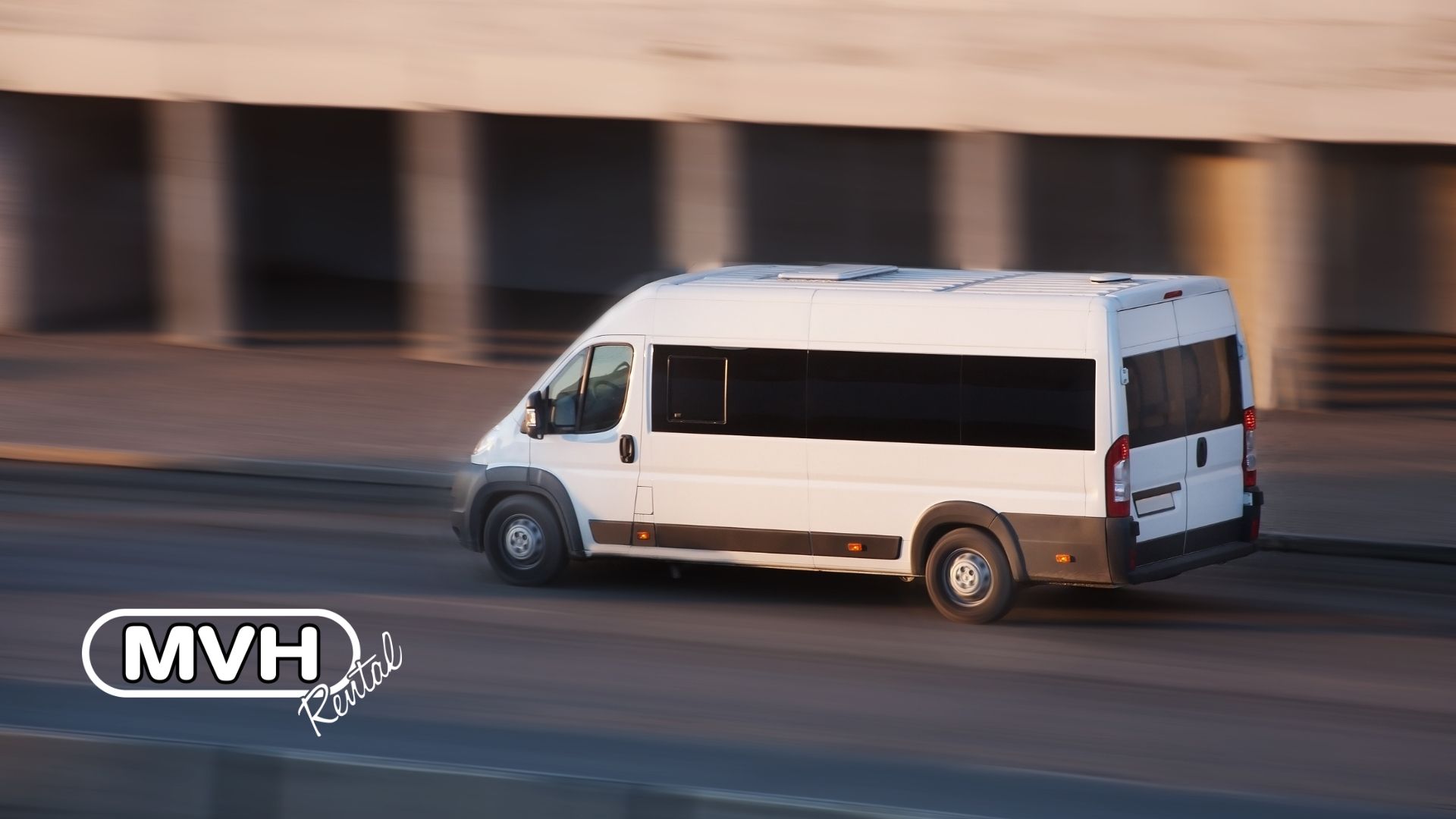Tips for first-time minibus drivers
Are you hiring a minibus for the first time? Whether it's for business or pleasure, here's how to make the most out of your minibus experience.

Driving a large vehicle can be a daunting experience, especially when it's your first time behind the wheel.
Not only are minibuses larger, wider, heavier and taller than cars, but they can also pose extra difficulties for first-timers.
Have you been nominated as the designated driver for a family vacation? Perhaps you're about to start a new job that requires your skills behind the wheel?
Don't worry. We've compiled a list of essential tips for first-time minibus drivers to help you on your way.
1. Know the law
Let's start with the legal stuff!
You're able to drive a minibus in the UK if you're over 21 years old and you've held your licence for over two years. If you're over 70, you must also meet the Group 2 medical standards.
You also need to be driving voluntarily. What this means is that you can use your current car driving licence to drive a minibus – as long as there's no charge from or on behalf of your passengers. The government calls this driving for "hire or reward".
Lastly, you can't tow a trailer or exceed the maximum weight restriction of 3.5 tonnes, which includes the minibus itself and all passengers onboard. It's worth noting that there's an additional weight allowance of up to 750kg for the equipment of a disabled passenger, such as a wheelchair or ramp.
Go to the
GOV.UK website for more details on legal considerations.
2. Check if you need a permit
Are you driving for a voluntary organisation, such as an educational, religious or sports organisation?
If the answer's yes – and you need to charge running costs – you must apply for a minibus permit through the Driver and Vehicle Standards Agency (DVSA).
If you're driving a minibus for business or the above doesn't apply, then you'll need to apply for two documents. The first is a minibus provisional entitlement, better known as a passenger-carrying vehicle (PCV) licence. The second is a public service vehicle (PSV) operator licence.
All the relevant information can be found on
GOV.UK.
3. Take it on a practise drive (or two)
A minibus is heavier, longer and wider than the average car. So when driving a minibus, you'll notice a considerable difference in steering, braking and manoeuvring.
We highly recommend taking the minibus for a couple of practise runs before getting out into the open with everyday traffic.
Find a quiet place such as an empty car park or a residential street and get yourself prepared. You'll need to adjust your mirrors so you can see the back corners of the vehicle, adjust your seat and ensure you can reach the pedals easily.
Take your time and get comfortable with your vehicle. It's important to make sure you're familiar with the vehicle's shape and size.
4. Avoid and minimise distractions
Passengers should never attempt to distract the driver of any vehicle, but this becomes even more important when travelling in a minibus.
Before you set off on your journey it's a good idea to lay some ground rules with your passengers. These might include:
- Wearing seatbelts at all times
- Not getting up and moving around while in transit
- Keeping noise to a low volume
You're not there to ruin your passengers' journey in any way, but you're there to keep them safe.
As the driver, you should limit conversation with your passengers and keep your eyes and ears on your surroundings. RoSPA states that minibus drivers should never use a hand-held or hands-free device while on the move because doing so could result in a serious accident.
5. Speed limits
Did you know that some speed limits are lower for minibuses than they are for cars? Here's what's worth knowing:
- Single carriageways have a speed limit of 50 miles per hour.
- Dual carriageways are restricted to 60 miles per hour.
- Built-up roads have a limit of 30 miles per hour.
- Motorways have a limit of 70 miles per hour. This is reduced to 60 miles per hour if your minibus is longer than 12 metres.
All these rules are subject to change. Remember: if you see a sign with a lower speed limit, always obey it!
6. Allow more space
This applies to two scenarios: braking and manoeuvring.
A longer vehicle means a longer stopping distance. So make sure you're always leaving plenty of space between yourself and the driver in front and keep your eyes on the road anticipating when you may need to stop.
As you're manoeuvring a minibus and not a smart car, you need to allow a more generous turning circle. This is so your back wheels can take corners without cutting them. If you get this wrong, you risk curbing your alloys or causing other types of damage.
Again, we recommend practising – ideally in a car park or quiet residential street. This lets you get a feel for the minibus's handling in a real-life situation and gives you the space to practice.
Don't forget to allow extra room when reversing into a space as well.
7. Height
Last but not least, you need to make a mental note (or an actual note) of your vehicle's height before driving. For car drivers, the size of their vehicle is rarely a worry, but it's a totally different ball game when it comes to driving a minibus.
It's worth double-checking before you set off as there could be low bridges and height-restricted car parks along your route.
Planning for a family "stay-cay"? Or maybe you need to hire a minibus for commercial purposes?. Metro Vehicle Hire offers affordable
minibus hire in Newcastle, Gateshead and the northeast.
Get in touch to learn more.











